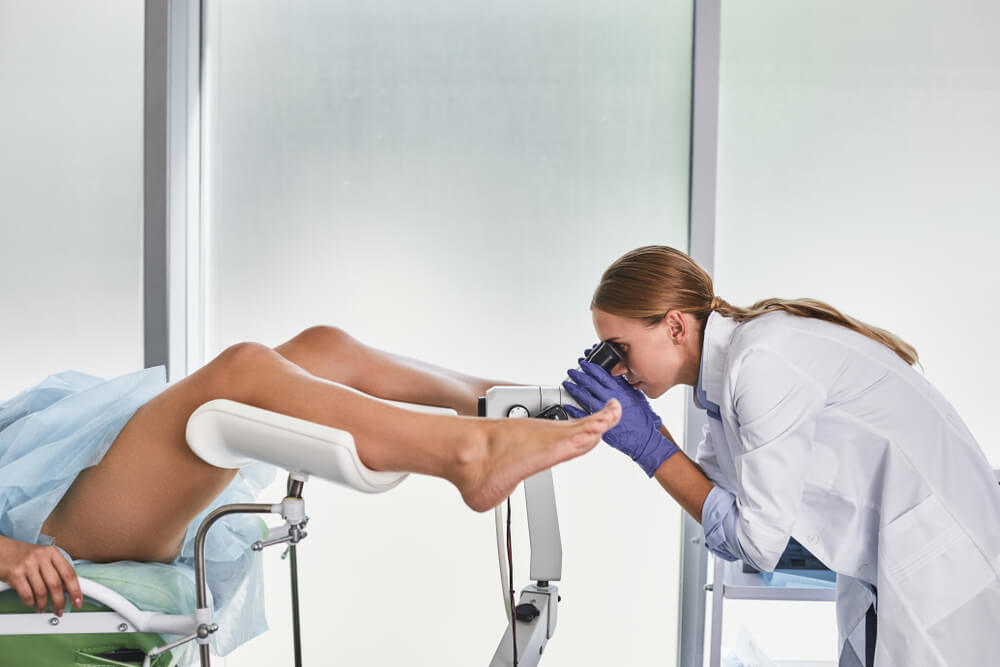Becoming a woman is full of milestones; some good and some are just part of life. The time in which womanhood officially starts is when the menstrual cycle begins. This signifies sexual maturity and can happen at any time between the ages of 8 to 15, but most girls get it around the age of 12. Now, fast forward a few years later to your senior year of college and the real world right around the corner for most women, this is a significant age when doctor visits become more routine.
At the age of 21, it is strongly suggested that a pelvic exam becomes a regular part of every woman’s wellness visit. This exam is all part of ensuring that everything is as it should be and any problems, if any, are detected early on. Preventative medicine is a crucial part of staying healthy and living a long life. We’ll dive into a bit more of what a pelvic exam is and some very common questions that are asked, especially by women prior to their first exam.
What Is a Pelvic Exam?

As mentioned above, a pelvic exam is a routine aspect of a wellness visit that women should start doing at the age of 21, unless there is a medical condition that requires one sooner. This exam is a normal part of taking care of your health and only takes a few minutes. The objective of a pelvic exam is to examine the vulva and the internal reproductive organs. Before starting the pelvic exam, it is vital to let your doctor know if you have caught an STD or any other reproductive health concerns you may have.
This is necessary because other tests or special exams may be required. During this annual routine pelvic exam, your doctor will be determining the health of your reproductive organs that such as the vulva, vagina, cervix, ovaries, fallopian tubes and uterus. This will ensure that there are no problems and everything is healthy. During the exam, there are typically three (sometimes four) different elements, just depending on the timing or any new concerns. The elements of what happens during a pelvic exam include:
- External Exam – During this part, the doctor will examine the outer part of the genitalia- your vulva and vaginal opening. The doctor is checking for any abnormalities like genital warts, cysts, irritation, abdominal discharge and etc. that may be visible or present under the skin. Women should examine themselves on a regular basis, just to have an understanding of what is normal for them.
- Speculum Exam – For the next part of the exam, your doctor will use a speculum (a medical device that is used to hold open orifices and cavities) to examine the cervix. The cervix is the narrow passage at the end of the uterus. In this phase of the exam, there shouldn’t be any pain, but it may feel strange or uncomfortable, but if any pain is felt, speculums come in a variety of sizes and your doctor can use a smaller one if necessary. The doctor will first perform a visual inspection of the interior of the vagina. If it is time for a Pap smear, a special medical tool will be used to scrape a sampling of the cells that reside in the cervix wall. This test is crucial for the early detection of cancer or even pre-cancer in your cervix and is recommended every three years. If you and your doctor have discussed that STD testing should be done based on your sexual history, a cotton swab sample will also be taken and tested. Even with the Pap and STD testing, the time necessary to complete this phase of the exam is only a few minutes.
- Bimanual Exam – This next test is to check the health of the uterus, ovaries and fallopian tubes. The doctor will first put on rubber gloves and use lubricant prior to inserting one or two fingers in the vagina, then the doctor’s other hand is pressed to the lower abdomen. This is the test to examine the condition, shape, and position of the uterus, any signs of abnormalities, like an infection. Also, the doctor will check for the increased size of tumors, ovarian cysts ovaries/fallopian tubes. This is a crucial component and can be a very beneficial exam in catching problems early. Again, the phase of the exam should not hurt, but patients may feel some discomfort
- Rectovaginal Exam – While this one is not always necessary; it is a good idea to have the rectum checked. Whether you have experienced any concerns, or it has been a while since the last time, your doctor will often make the suggestion to perform this exam, or you should feel free to bring it up. During this exam, your doctor will use gloves and place a finger to take a look at your rectum and the tissues/muscles between the anus and vagina. The doctor will be looking for any tumors, cysts, abnormalities, etc. behind the uterus, and go lower to your rectum.

That was a quick overview of the exam itself and if you have any outstanding questions, you should always consult with your doctor. But in order to provide a little bit more information, we are going to answer some of the most common questions about pelvic exams.
- Is it painful? – The question, “does a pelvic exam hurt?” is the most common question asked and as we mentioned above, the exam itself should not hurt. While you may feel some discomfort during the exam if you feel any pain that usually will mean that something out of the ordinary is present and you need to tell your doctor right away. The feeling is often described as “crowding or fullness” in the vagina. It is important that during the exam, you try to follow these tips in order to not be tense:
-
- Breathe deeply throughout the exam
- Your stomach and leg muscles should be relaxed
- You can ask your doctor/nurse to describe what is being done. This can help put a mind at ease if you know.
-
- Will I need to remove all my clothes? – Typically, yes. A hospital gown will most likely be given to you to put on.
- Does a pelvic exam hurt for virgins? – In short, no. While the sensations felt may be more unfamiliar to women who have not experienced sexual intercourse, but it should not hurt.
- Will I feel pain after the pelvic exam? – Patients may feel some lingering discomfort following a Pap smear that may be accompanied by some mild cramping or bleeding. If the discomfort or pain persists, definitely contact your doctor.
Hopefully, this information has helped clear up some uncertainties and concerns regarding a pelvic exam. The exams are a routine part of an annual wellness visit and are performed as a preventative measure to help catch issues early on. If you are looking for an OBGYN in Tamarac that has decades of experience while providing the absolute best patient care, give Dr. Andrew Krinsky. Located in South Florida, Dr. Krinsky provides exceptional care and various procedures from his office that range from wellness exams to SculpSure body sculpting. Visit our site today to request an appointment.


